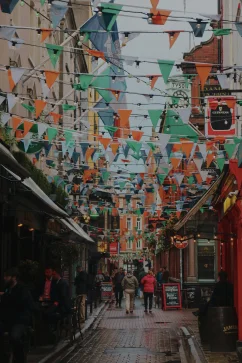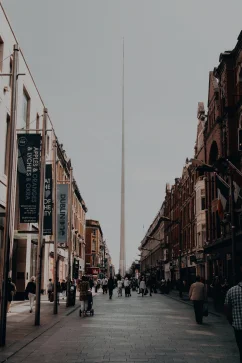Guide to Emergency Places
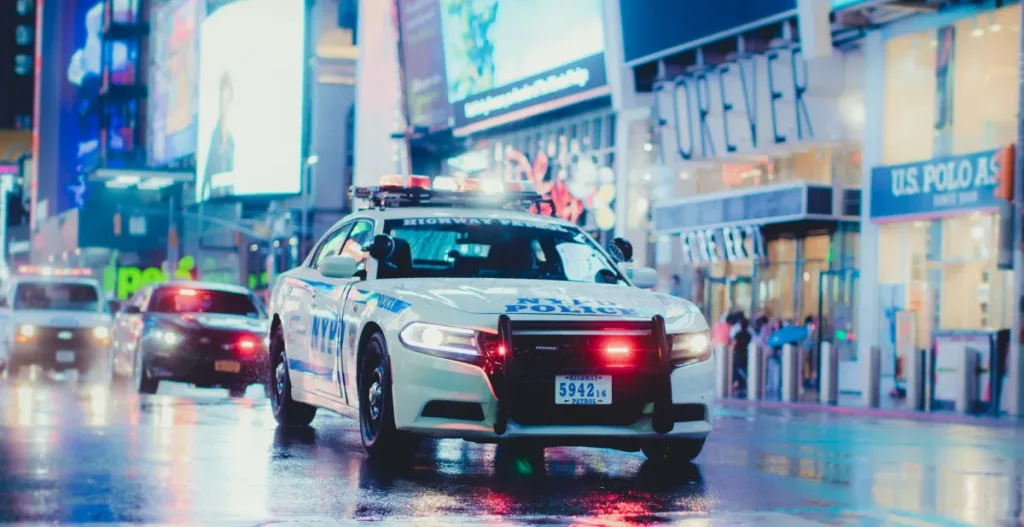
When it comes to safety and assistance in New York City, it’s crucial to be prepared and aware of the resources available in case of emergencies. Security in New York City is a top priority for both residents and visitors due to its large population and prominence as a global metropolis. The city has established comprehensive measures to ensure the safety and well-being of its residents and guests.
- Hospitals and Medical Centers in New York
- Police Stations in New York
- Fire Stations in New York
- Emergency Shelters in New York
- Poison Control Center in New York
- Emergency Contacts in New York
- Evacuation Centers in New York
- Community and Local Resources
- Public Transportation in New York
- Roadside Assistance
- Embassies and Consulates in New York
- Emergency Alerts
- Conclusion in case of an emergency in New York
Hospitals and Medical Centers in New York
Bellevue Hospital Center
Located in Manhattan, Bellevue is one of the oldest and most renowned public hospitals in the country. It provides comprehensive medical services.
Address: 462 First Avenue, New York, NY 10016
Telephone: (212) 562-1444
NewYork-Presbyterian Hospital
This world-class medical institution has several locations across the city, offering a wide range of medical specialties.
Address (Main Campus): 525 East 68th Street, New York, NY 10065
Telephone: 212-342-0454
Mount Sinai Hospital
With various locations throughout NYC, Mount Sinai is a prominent healthcare provider known for its expertise in medical care and research.
Address (Main Campus): One Gustave L. Levy Place, New York, NY 10029
Telephone: 212-241-6500 or 212-590-3300
Police Stations in New York
NYPD Headquarters
The New York City Police Department’s headquarters is located in Lower Manhattan, overseeing law enforcement across the city.
Address: 1 Police Plaza, New York, NY 10038
Telephone: NYPD General Inquiries 646-610-5000
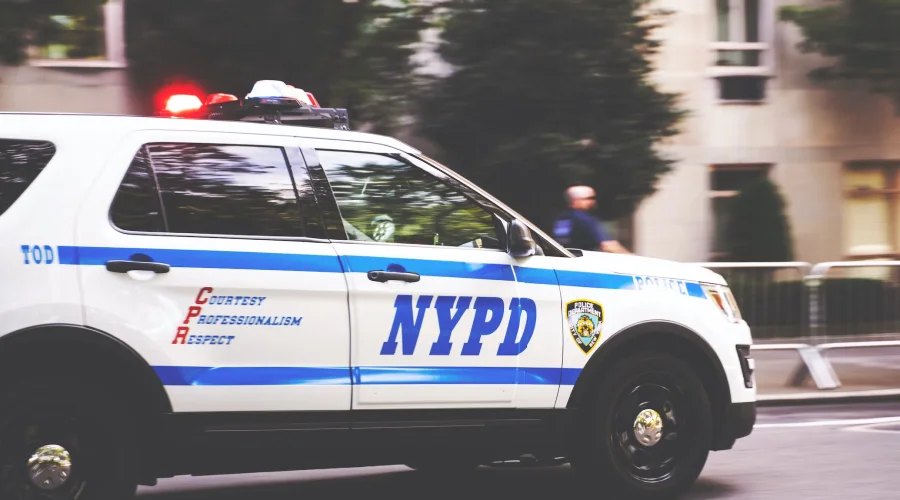
Fire Stations in New York
FDNY Headquarters
The New York City Fire Department’s headquarters can be found in Brooklyn.
Address: 9 Metrotech Center, Brooklyn, NY 11201
Telephone: (718) 403-4000
Emergency Shelters in New York
NYC Emergency Management
In the event of disasters or emergencies, NYC Emergency Management sets up emergency shelters for residents. Locations may vary depending on the situation. Emergency shelters in New York City provide crucial assistance to individuals and families facing homelessness, displacement due to disasters, extreme weather conditions, or other urgent situations. These shelters offer temporary refuge, ensuring that those in need have a safe place to sleep, access to basic amenities, and support in their challenging times.
Emergency shelters are typically managed by government agencies, non-profit organizations, or faith-based groups, all working together to address the immediate needs of the homeless population and other vulnerable individuals. These shelters are an essential component of the city’s broader strategy to combat homelessness and assist those facing emergencies. In this guide, we will explore the vital role of emergency shelters in NYC, their services, locations, and how individuals can access help when it’s needed most. Whether it’s a bitter winter night or a sudden crisis, the network of emergency shelters in New York City plays a critical part in ensuring that everyone has a place of refuge and assistance when required.
Poison Control Center in New York
New York City Poison Control Center
In case of poisoning emergencies or questions, this center provides expert advice.
Phone: 212-POISONS (212-764-7667)
The Poison Control Center in New York City provides essential services to assist individuals and healthcare professionals when dealing with cases of poison exposure or potential poisoning. Whether it’s a child accidentally ingesting a household product, an adult exposed to harmful chemicals, or any other poison-related incident, the Poison Control Center is a valuable resource for information, guidance, and immediate assistance.
The services provided by the Poison Control Center in NYC include Emergency Assistance. The center operates a 24/7 hotline (1-800-222-1222) where individuals and healthcare providers can seek immediate help and guidance for poison-related emergencies. The hotline is staffed by experts, including nurses, pharmacists, and toxicologists, who can provide real-time advice on how to respond to poisoning incidents. Also offers information and educational resources on various poisoning risks, prevention strategies, and first-aid measures. They can help individuals and communities better understand potential hazards and how to avoid them.
In Case Assessment, When a poisoning incident is reported, the center’s experts evaluate the case, providing information on the toxicity of the substance involved, potential symptoms, and recommended actions. This guidance is crucial for determining whether further medical treatment is necessary. Then they Follow-Up and monitor the center often following up on cases to ensure that the advice provided was effective and that the individual has fully recovered. They may also provide additional recommendations or referrals to healthcare providers when needed.
In summary, the Poison Control Center in NYC offers critical services to address poisoning emergencies and prevent such incidents through education and outreach. It is a valuable resource for both individuals and healthcare professionals, contributing to public health and safety throughout the city.
Emergency Contacts in New York
911: In any life-threatening emergency, dial 911 for immediate assistance. This number is for police, fire, medical emergencies, and more. In New York City, as in most places, there are various emergency contact numbers for different types of emergencies. It’s important to keep these emergency contact numbers readily available, especially the 911 emergency services, which are available 24/7 to provide immediate assistance in critical situations. If you’re not facing a life-threatening emergency, consider using the appropriate non-emergency or specialized contact numbers to ensure that resources are used efficiently. Here are some of the most important emergency contact numbers you should be aware of:
- Police Emergency: For immediate police assistance in emergency situations, including crimes in progress or threats to life or property, call 911.
- Fire and Medical Emergencies: For fire-related emergencies, medical assistance, and rescues, dial 911. This will connect you to the New York City Fire Department (FDNY).
- Poison Control Center: If you suspect someone has been exposed to a toxic substance, call the Poison Control Center at 1-800-222-1222. They provide guidance on how to respond to poison-related incidents.
- 911 Texting Service: New York City offers a text-to-911 service for individuals who are deaf, hard of hearing, or have a speech disability. You can send a text message to 911 for emergency assistance.
- NYC Non-Emergency Line: For non-emergency police matters, call 311. This is useful for reporting minor incidents, filing complaints, or seeking information.
- Emergency Medical Services (EMS): To request an ambulance or medical assistance, call 911. EMS will respond to medical emergencies and transport patients to hospitals.
- National Suicide Prevention Lifeline: If you or someone you know is in emotional distress or having thoughts of suicide, you can call the National Suicide Prevention Lifeline at 1-800-273-TALK (1-800-273-8255).
- Domestic Violence Hotline: For assistance with domestic violence situations, you can contact the National Domestic Violence Hotline at 1-800-799-SAFE (1-800-799-7233).
- Adult Protective Services: To report suspected abuse or neglect of vulnerable adults, contact the New York City Human Resources Administration at 1-844-697-3505.
- Child Abuse and Neglect: If you suspect child abuse or neglect, you should contact the New York State Central Register of Child Abuse and Maltreatment at 1-800-342-3720.
- New York City Commission on Human Rights: If you’ve experienced discrimination in housing, employment, or public accommodations, you can file a complaint with the NYC Commission on Human Rights at 718-722-3131.
- Animal Control: For concerns related to injured or aggressive animals, contact Animal Care Centers of NYC (ACC) at 311.
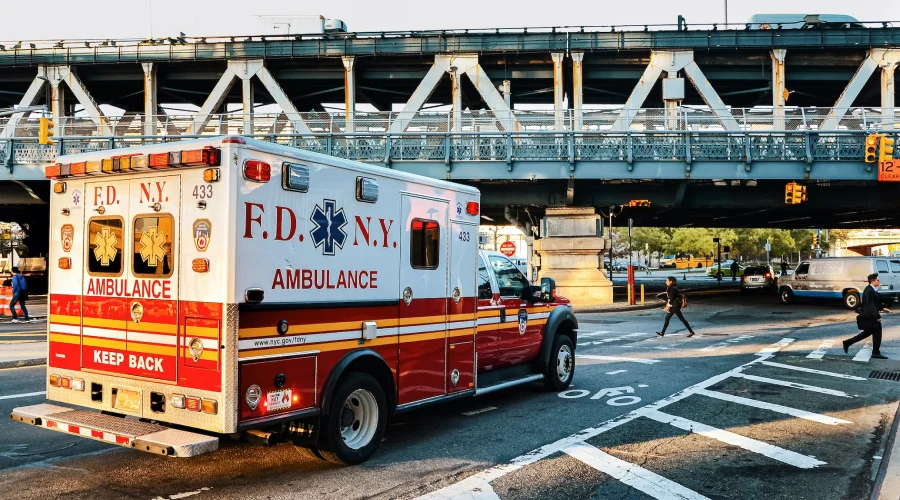
Evacuation Centers in New York
In the event of a natural disaster or large-scale emergency, evacuation centers may be set up throughout the city. Pay attention to local news and emergency alerts for information on their locations. In New York City, Evacuation Centers are designated locations where residents can seek shelter and assistance during emergencies, particularly during natural disasters like hurricanes or other events that require evacuation. These centers are managed by the city’s emergency management authorities and are activated as needed. Here are some of the key Evacuation Centers in NYC.
The New York City Department of Education (NYCDOE) designates certain public schools, including high schools and colleges, as evacuation centers. These sites are identified and announced by local officials when an evacuation is required.
Bronx
– Christopher Columbus High School
– Herbert H. Lehman High School
Brooklyn
– John Dewey High School
– Brooklyn Technical High School
– Abraham Lincoln High School
– Edward R. Murrow High School
Manhattan
– City College (CUNY)
– George Washington Educational Campus
Queens
– Long Island City High School
– John Bowne High School
Staten Island
– Susan E. Wagner High School
– Curtis High School
These are just a few examples of the many evacuation centers available in New York City. The specific evacuation centers used during an emergency will depend on the circumstances and the areas that need to be evacuated.
It’s important to stay informed through official emergency channels like the NYC Emergency Management website, local news, and government notifications to know which evacuation centers are open and available during any given emergency. During an evacuation, follow the guidance and instructions provided by local authorities to ensure your safety and the safety of your family.
Community and Local Resources
New York City offers a wide range of community and local resources to assist residents and visitors. These resources are designed to support various needs, from health and education to housing and social services. These are just a few examples of the community and local resources available in New York City. The city’s government and numerous organizations work together to provide a wide range of services and support to meet the needs of its diverse population. Depending on your specific requirements, there are many resources available to assist you in NYC. Here are some key community and local resources available in NYC:
- NYC 311: NYC 311 is the official source for New York City government information and non-emergency services. You can contact 311 by phone or visit their website to get information about city services, report problems or complaints, and find local resources.
- Public Libraries: The New York Public Library (NYPL), Brooklyn Public Library (BPL), and Queens Public Library (QPL) are three of the largest public library systems in the country. They offer a wealth of educational and community resources, including books, online classes, and public programs.
- Hospitals and Health Clinics: NYC has a robust healthcare system with numerous hospitals and health clinics throughout the city. Some prominent facilities include Bellevue Hospital Center, NewYork-Presbyterian Hospital, and Mount Sinai Hospital.
- Food Assistance Programs: For those in need of food assistance, the city provides resources such as food pantries, soup kitchens, and nutrition programs. The Food Bank for New York City is a major organization that addresses food insecurity in the city.
- Homelessness Services: The NYC Department of Homeless Services (DHS) offers services and shelter options for individuals and families experiencing homelessness. They work to prevent and address homelessness in the city.
- Education Services: The New York City Department of Education (NYCDOE) manages the public school system and provides information about public schools, enrollment, and educational resources. Additionally, the City University of New York (CUNY) offers higher education opportunities.
- Transportation Resources: The Metropolitan Transportation Authority (MTA) operates public transit, including buses and subways. Access-a-Ride is a paratransit service for people with disabilities. The NYC Department of Transportation (DOT) manages street and traffic information.
- Community Centers: NYC is home to various community centers that offer programs and services to residents. These include senior centers, youth centers, cultural centers, and recreational facilities.
- Cultural Institutions: The city is rich in cultural resources, including museums, theaters, galleries, and performance spaces. Some well-known institutions include the Metropolitan Museum of Art, the Museum of Modern Art (MoMA), and the Lincoln Center for the Performing Arts.
- Senior Services: For older adults, NYC provides senior centers, home-delivered meals, and support for caregivers. The NYC Department for the Aging (DFTA) is the primary agency responsible for senior services.
- Emergency Services: In case of emergencies, the NYC Emergency Management department provides resources and information for disaster preparedness and response.
Public Transportation in New York
The Metropolitan Transportation Authority (MTA) provides updates on service changes and disruptions during emergencies. Check the MTA’s website or social media channels for information. New York City offers an extensive and efficient public transportation system, making it easy for residents and visitors to get around the city. The NYC public transportation system is well-integrated and uses the MetroCard system for payment, which allows passengers to transfer between subway and bus services. The official website of the Metropolitan Transportation Authority (MTA) provides detailed information, maps, and schedules for all modes of transportation in NYC, making it easy for travelers to plan their journeys. Here are the primary modes of public transportation in NYC:
- Subway: The New York City Subway is one of the largest and busiest metro systems in the world. It consists of numerous subway lines that cover the five boroughs of NYC: Manhattan, Brooklyn, Queens, the Bronx, and Staten Island. The subway operates 24/7, with frequent service during the day and reduced service during late-night hours.
- Buses: The Metropolitan Transportation Authority (MTA) operates a vast network of bus routes throughout the city. Buses are a convenient way to reach destinations not directly served by the subway. Many buses run 24 hours a day.
- Commuter Trains: The MTA also manages commuter rail services that connect NYC with surrounding areas. These services include the Long Island Rail Road (LIRR) and Metro-North Railroad. Commuter trains are essential for those living in the suburbs and commuting to the city.
- Ferries: NYC’s waterways are served by several ferry operators, providing transportation between Manhattan and other boroughs. The Staten Island Ferry, for example, offers a free connection between Staten Island and Manhattan, providing fantastic views of the Statue of Liberty.
- Bike Sharing: NYC has a bike-sharing program called Citi Bike, which allows users to rent bicycles at various stations across the city. Biking is an excellent way to explore different neighborhoods and enjoy outdoor rides.
- Taxicabs and Rideshares: Yellow taxicabs are a common sight in NYC, and ridesharing services like Uber and Lyft are widely available. Taxis are hailed from the street or can be found at designated taxi stands.
- Paratransit Services: Access-a-Ride is a paratransit service for individuals with disabilities who are unable to use the subway or bus system. It provides door-to-door transportation.
- Aerial Tramway: The Roosevelt Island Tramway connects Manhattan with Roosevelt Island, providing a unique and scenic mode of transportation.
- Airport Transportation: JFK International Airport, LaGuardia Airport, and Newark Liberty International Airport are the major airports serving NYC. Various transportation options are available to and from these airports, including AirTrain, airport shuttles, taxis, and rideshares.
- Rack Railway: The NYC Subway’s SIR (Staten Island Railway) serves Staten Island and operates similarly to a subway but is officially classified as a railway.
- Car Rentals: Car rental agencies are available for those who prefer to drive around NYC or explore destinations outside the city.
The NYC public transportation system is well-integrated and uses the MetroCard system for payment, which allows passengers to transfer between subway and bus services. The official website of the Metropolitan Transportation Authority (MTA) provides detailed information, maps, and schedules for all modes of transportation in NYC, making it easy for travelers to plan their journeys.
Roadside Assistance
If you’re in need of roadside assistance in New York City, you can contact several providers for help. Please note that if you are in a life-threatening emergency, such as a medical emergency or an accident with injuries, you should call 911 immediately for assistance. For non-emergency roadside assistance, the numbers provided above are appropriate. Additionally, some vehicles come with manufacturer-specific roadside assistance programs, so check your vehicle’s documentation or owner’s manual for details.
AAA (American Automobile Association)
If you’re a AAA member, you can call their 24/7 roadside assistance hotline at 1-800-AAA-HELP (1-800-222-4357).
Allstate Roadside Assistance
If you have Allstate insurance, you can contact their roadside assistance service by calling 1-800-ALLSTATE (1-800-255-7828).
GEICO Emergency Roadside Service
GEICO policyholders can request assistance by calling 1-800-424-3426.
NYC Towing Services
For independent towing and roadside assistance services in New York City, you can search for local providers in your area. Be sure to check online or use a directory for contact information.
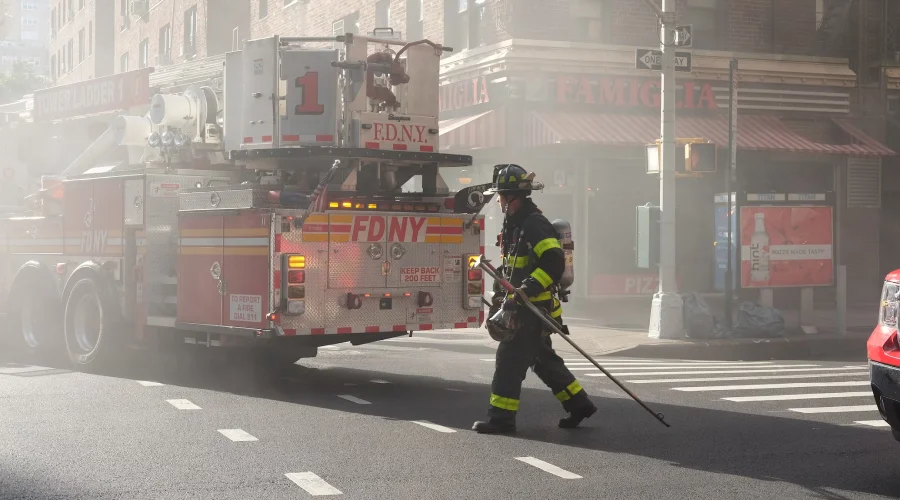
Embassies and Consulates in New York
New York City is home to a significant number of foreign embassies and consulates, reflecting its status as a global hub for diplomacy, commerce, and culture. Please note that this list is not exhaustive, and there are many more embassies and consulates in New York City representing countries from around the world. If you are seeking information about a specific embassy or consulate or need to contact one, it’s advisable to visit the official website of the respective diplomatic mission or the U.S. Department of State’s website for a comprehensive list and contact details. New York City is home to numerous foreign embassies and consulates, representing countries from around the world. These diplomatic missions serve to promote international relations, assist their citizens living or traveling in the city, and provide various consular services. Here are some of the embassies and consulates in New York City:
Permanent Mission of Afghanistan to the United Nations
Address: 633 Third Avenue, 27th Floor, New York, NY 10017
Website: afghanistan-un.org
Consulate General of Argentina in New York
Address: 12 West 56th Street, New York, NY 10019
Website: cnyor.mrecic.gov.ar
Consulate General of Australia in New York
Address: 150 East 42nd Street, 34th Floor, New York, NY 10017
Website: newyork.usa.embassy.gov.au
Consulate General of Brazil in New York
Address: 1185 Avenue of the Americas, 21st Floor, New York, NY 10036
Website: cgnewyork.itamaraty.gov.br
Consulate General of Canada in New York
Address: 466 Lexington Avenue, New York, NY 10017
Website: canadainternational.gc.ca
Permanent Mission of France to the United Nations
Address: 245 East 47th Street, New York, NY 10017
Website: franceonu.org
Consulate General of Germany in New York
Address: 871 United Nations Plaza, New York, NY 10017
Website: new-york.diplo.de
Consulate General of India in New York
Address: 3 East 64th Street, New York, NY 10065
Website: indiacgny.org
Consulate General of Italy in New York
Address: 690 Park Avenue, New York, NY 10065
Website: consnewyork.esteri.it
Consulate General of Japan in New York
Address: 299 Park Avenue, New York, NY 10171
Website: ny.us.emb-japan.go.jp
Embassy of Afghanistan
Address: 633 Third Avenue, 27th Floor, New York, NY 10017
Telephone: +1 (212) 972-1212
Permanent Mission of Albania to the United Nations
Address: 801 Second Avenue, 21st Floor, New York, NY 10017
Telephone: +1 (212) 355-6307
Permanent Mission of Algeria to the United Nations
Address: 211 East 43rd Street, Suite 605, New York, NY 10017
Telephone: +1 (212) 687-6640
Permanent Mission of Argentina to the United Nations
Address: 800 Second Avenue, 19th Floor, New York, NY 10017
Telephone: +1 (212) 688-5900
Permanent Mission of Australia to the United Nations
Address: 150 East 42nd Street, 33rd Floor, New York, NY 10017
Telephone: +1 (212) 351-6600
Consulate General of Argentina
Address: 12 West 56th Street, New York, NY 10019
Phone: +1 (212) 603-0400
Email: [email protected]
Consulate General of Brazil
Address: 1185 Avenue of the Americas, 21st Floor, New York, NY 10036
Phone: +1 (917) 777-7777
Email: [email protected]
Consulate General of Canada
Address: 466 Lexington Avenue, 20th Floor, New York, NY 10017
Phone: +1 (212) 596-1628
Email: [email protected]
Consulate General of France
Address: 934 Fifth Avenue, New York, NY 10021
Phone: +1 (212) 606-3600
Email: [email protected]
Consulate General of Germany
Address: 871 United Nations Plaza, New York, NY 10017
Phone: +1 (212) 610-9700
Email: [email protected]
Consulate General of India
Address: 3 East 64th Street, New York, NY 10065
Phone: +1 (212) 774-0600
Email: [email protected]
Consulate General of Italy
Address: 690 Park Avenue, New York, NY 10065
Phone: +1 (212) 737-9100
Email: [email protected]
Consulate General of Japan
Address: 299 Park Avenue, New York, NY 10171
Phone: +1 (212) 371-8222
Email: [email protected]
Consulate General of the Republic of Korea (South Korea)
Address: 335 East 45th Street, New York, NY 10017
Phone: +1 (646) 674-6000
Email: [email protected]
Consulate General of Mexico
Address: 27 East 39th Street, New York, NY 10016
Phone: +1 (212) 217-6400
Email: [email protected]
Emergency Alerts
Sign up for NYC Emergency Notifications to receive alerts and updates regarding emergencies, weather advisories, and other important information. Remember that being prepared is essential for your safety in any emergency situation. Familiarize yourself with these resources, have a communication plan in place with your loved ones, and stay informed about emergency procedures and updates in your area. New York City has an emergency alert system in place to keep residents and visitors informed about critical situations, including severe weather, public safety threats, and other emergencies. It’s important to stay informed about emergency alerts in New York City, especially during severe weather events and other critical situations. You can sign up for Notify NYC alerts on their official website or download the Notify NYC app to receive timely updates and instructions during emergencies. Additionally, ensure that your mobile phone is set up to receive Wireless Emergency Alerts (WEA) for important public safety messages. The city uses several methods to communicate these emergency alerts:
- NYC Emergency Management Notify NYC: Notify NYC is the official emergency alert system for New York City. It provides real-time information via various communication channels, including text messages, email, phone calls, the Notify NYC website, and the Notify NYC app. You can sign up to receive alerts on specific topics, such as weather, traffic, and public safety, as well as updates on ongoing emergencies.
- Wireless Emergency Alerts (WEA): WEA is a nationwide alert system that sends emergency messages to mobile devices within the affected area. This includes alerts about extreme weather conditions, local emergencies that require evacuation or immediate action, AMBER alerts, and presidential alerts. WEA messages are sent automatically to mobile phones without the need to sign up.
- Emergency Alert System (EAS): The EAS is a national public warning system that allows the President to address the American people within 10 minutes during a national emergency. It can also be used by state and local authorities to deliver important emergency information, such as weather information, imminent threats, AMBER alerts, and local incident information.
- Amber Alerts: Amber Alerts are emergency messages issued for missing children at risk of harm or death. These alerts are distributed through various channels, including law enforcement, media, and wireless emergency alerts.
- Public Safety Notifications: These notifications include information about significant police and public safety incidents. They are typically sent through the Notify NYC system.
- Weather Alerts: Weather alerts inform residents and visitors about severe weather conditions, including winter storms, hurricanes, heatwaves, and other weather-related emergencies. These alerts are often issued by the National Weather Service.
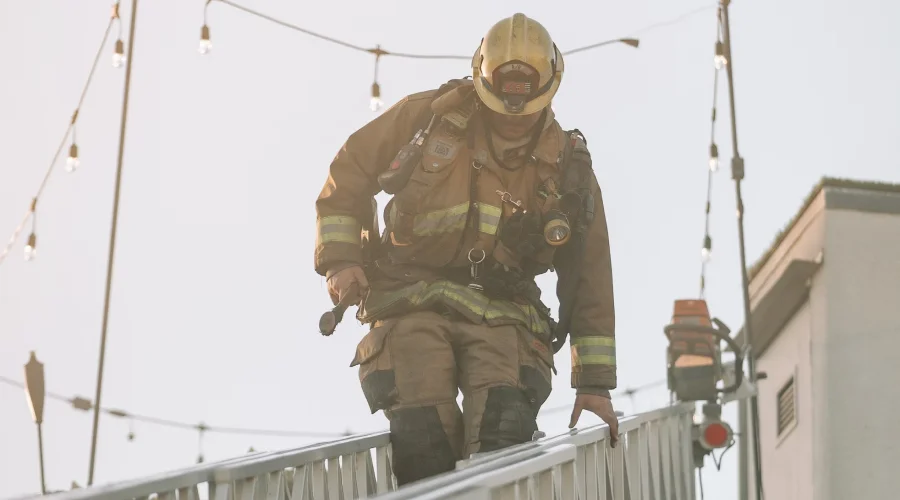
Conclusion in case of an emergency in New York
In conclusion, New York City takes security and safety seriously, with a comprehensive and multi-faceted approach to ensure the well-being of its residents and millions of visitors. With a robust law enforcement presence, extensive surveillance systems, and a commitment to emergency preparedness, NYC is well-equipped to respond to a wide range of situations, from routine law enforcement to counterterrorism efforts. The city’s dedication to public safety extends to its public spaces, transportation networks, and iconic landmarks, where security measures are in place to protect both residents and tourists. Additionally, community engagement and public awareness campaigns foster a sense of shared responsibility for safety, encouraging individuals to be vigilant and report any concerns. In a world where security challenges can be dynamic and complex, NYC remains vigilant and adaptable, constantly refining its security measures to address emerging threats. As a result, it continues to be a welcoming and vibrant city where people can live, work, and visit with confidence in their safety.







